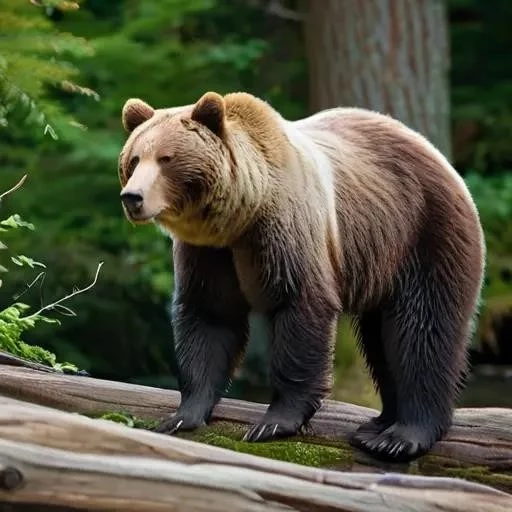In the untamed heart of the American West, where geysers erupt and ancient forests stand sentinel, a silent, monumental drama unfolds annually: the incredible journey of the grizzly bear. These formidable apex predators, symbols of raw wilderness and untamed power, are more than just magnificent creatures; they are living barometers of ecological health, their very mass telling a profound story. From the moment they emerge from their dens, driven by an insatiable hunger, to the critical pre-hibernation period when every pound counts, the grizzly bear weight is a testament to their remarkable adaptability and the rich, complex ecosystems they inhabit. This year, the scientific community and wildlife enthusiasts alike were captivated by a particular Yellowstone giant, whose impressive bulk nearly shattered existing records, offering a thrilling glimpse into the robust health of the region’s bear population.
The Interagency Grizzly Bear Study Team (IGBST), a pioneering force in wildlife research, recently captured a familiar Yellowstone griz in October, revealing a staggering weight just three pounds shy of the all-time record for the park’s heaviest grizzly. This monumental achievement underscores the diligent, often perilous work undertaken by scientists to monitor these elusive animals. Capturing and weighing a live grizzly is no small feat; it involves meticulously planned operations using specialized culvert traps or foot snares, followed by careful sedation to ensure the safety of both the bear and the research team. This hands-on approach, while challenging, provides invaluable data, allowing experts to track individual health, population trends, and the overall impact of environmental changes on these iconic carnivores, painting a vivid picture of their thriving presence.
Grizzly Bear Vital Statistics
Understanding the sheer scale of these magnificent creatures is key to appreciating their role in the ecosystem. Here’s a snapshot of typical grizzly bear characteristics:
| Category | Detail |
|---|---|
| Scientific Name | Ursus arctos horribilis (a subspecies of Brown Bear) |
| Average Male Weight | 400-790 lbs (180-360 kg); Yellowstone males average 595 lbs (270 kg) |
| Average Female Weight | 290-400 lbs (130-180 kg) |
| Max Recorded Weight | Up to 1,500 lbs (680 kg) for coastal brown bears (often larger than inland grizzlies) |
| Standing Height | Up to 9 feet (2.7 meters) on hind legs |
| Top Speed | Up to 35 mph (56 km/h) |
| Habitat | Forests, woodlands, alpine meadows, and tundra in western North America |
| Conservation Status | Threatened in the contiguous United States |
| Official Reference | Katmai National Park & Preserve ― Brown Bear FAQs |
The question of “how much does a grizzly bear weigh” is surprisingly complex, depending on a myriad of factors as diverse as their diet, age, sex, and crucially, the time of year. A bear preparing for hibernation in late autumn will carry significantly more bulk than one emerging leanly from its den in spring, having survived months on stored fat. Experts note that accurate field measurements are incredibly challenging; while tranquilized, a bear’s immense size and remote habitat often preclude the use of heavy-duty scales. This makes the IGBST’s consistent monitoring efforts all the more vital, providing a scientific bedrock for conservation strategies. By integrating insights from AI-driven data analysis and traditional field observations, researchers are painting an ever-clearer picture of these magnificent creatures’ physiological needs and ecological roles.
The sheer mass of a grizzly bear is not merely an impressive statistic; it is a critical component of its survival strategy. A heavier bear is often a healthier bear, better equipped to withstand the rigors of winter hibernation, more dominant in territorial disputes, and more successful in securing mates. This profound connection between weight and survival highlights the delicate balance of their ecosystem. When food sources like berries, fish, and small mammals are abundant, grizzlies can pack on hundreds of pounds, a life-sustaining investment that ensures the continuation of their lineage. Conversely, a decline in average weights can signal environmental stress, prompting urgent conservation interventions to protect these keystone species and their habitats.
Looking ahead, the future of grizzly bears, particularly in iconic landscapes like Yellowstone, appears increasingly optimistic, thanks to dedicated conservation efforts and ongoing research. The record-breaking weights observed in some individuals are a powerful indicator of a thriving ecosystem capable of supporting large, healthy populations. Pioneering initiatives by organizations like the IGBST, coupled with public awareness and responsible land management, are paving the way for a future where these majestic animals can continue to roam free, inspiring awe and reminding us of the wild beauty that still exists. By understanding the intricate details of their lives, from their impressive grizzly bear weight to their complex social structures, we are better equipped to ensure their enduring legacy for generations to come, safeguarding a vital piece of North America’s natural heritage.

